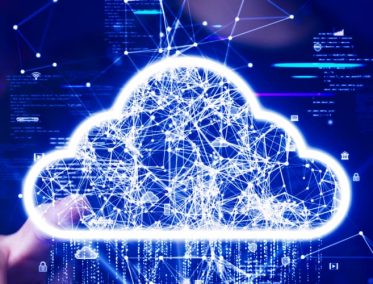An outdated operating system is a software system that is no longer receiving official support and updates from its manufacturer or developer. This means that the system is not being actively maintained, and security vulnerabilities and other issues may not be fixed.
The specific definition of an outdated operating system will depend on the system in question and its manufacturer’s support policies. For example, Microsoft no longer supports Windows 7 or earlier versions, while Apple no longer supports macOS versions prior to macOS 11 (Big Sur). Similarly, various versions of Linux distributions may have different support lifecycles, depending on the community or company behind them.
It’s important to note that even if an operating system is still receiving official support, older versions of the system may be considered outdated if they are missing critical security updates or features that are present in newer versions. It’s generally recommended to use the latest version of an operating system that is compatible with your hardware and software, in order to ensure the best performance and security.
Cybersecurity Threats and the Main Vulnerabilities in Outdated Operating Systems
Cybersecurity threats are a growing concern for businesses and individuals alike, with attackers becoming increasingly sophisticated and aggressive in their tactics. One of the main ways that attackers target computer systems is through vulnerabilities in outdated operating systems. These vulnerabilities can leave computer systems open to a wide range of attacks, including malware infections, data theft, and other malicious activities.
One of the main vulnerabilities in outdated operating systems is the lack of security updates and patches. As operating systems age, they become more susceptible to new and emerging threats, and vulnerabilities that were not initially known or addressed can be discovered. Without ongoing support and updates, these vulnerabilities remain unpatched and leave the system open to attack.
Another vulnerability in out of date operating systems is the lack of compatibility with new security technologies. As new security features are developed, they may not be compatible with older operating systems, leaving them vulnerable to attack. For example, newer operating systems may have better encryption algorithms that are not available in older systems, making them more resistant to attacks such as data theft.
In addition, outdated operating systems may lack modern security features such as two-factor authentication, which can make it easier for attackers to gain access to sensitive information. They may also lack modern security tools such as intrusion detection and prevention systems, firewalls, and antivirus software, which can help detect and prevent attacks.
Finally, attackers often target outdated operating systems because they know that many users do not prioritize system updates and may be using systems that are years out of date. This makes them an easy target for attackers who can exploit known vulnerabilities to gain access to sensitive information or launch attacks against other systems.
Outdated operating systems pose a significant cybersecurity risk, leaving computer systems vulnerable to a wide range of attacks. It’s important for individuals and organizations to prioritize system updates and upgrades to ensure that their systems are protected against emerging threats and new attack vectors.
Examples of Attacks Targeting Outdated Operating Systems
WannaCry Ransomware
One of the most significant attacks targeting outdated operating systems was the WannaCry ransomware attack in 2017. This attack exploited a vulnerability in the Windows operating system that had been patched by Microsoft several months prior, but many organizations had not installed the update. The attack spread rapidly across the globe, infecting hundreds of thousands of systems and causing widespread disruption and financial losses.
Heartbleed Bug
The Heartbleed bug was a vulnerability in the OpenSSL encryption library that affected many operating systems, including Linux and Windows. This vulnerability allowed attackers to steal sensitive information, including passwords and encryption keys, from systems that were running outdated versions of OpenSSL.
Apache Struts Vulnerability
In 2017, Equifax suffered a massive data breach that exposed the personal information of millions of customers. The attack was made possible by a vulnerability in the Apache Struts web framework, which was running on an outdated version of the Equifax server. The vulnerability had been patched several months prior, but the company had not installed the update.
Stuxnet Worm
The Stuxnet worm was a sophisticated malware attack that targeted industrial control systems running on outdated versions of the Windows operating system. The attack was believed to have been carried out by a nation-state actor and was designed to disrupt Iran’s nuclear program. The attack spread across multiple systems, causing physical damage to centrifuges and other critical infrastructure.
Mirai Botnet
The Mirai botnet was a network of compromised Internet of Things (IoT) devices that was used to launch a massive distributed denial-of-service (DDoS) attack in 2016. The attack targeted a domain name service provider and brought down popular websites such as Twitter and Netflix. The Mirai botnet was made possible by vulnerabilities in outdated firmware and operating systems that were running on the compromised devices.
These are just a few examples of the types of attacks that can target outdated operating systems. It’s important for individuals and organizations to stay vigilant and keep their systems up-to-date to protect against emerging threats and vulnerabilities.
Performance Risks of Using Outdated Operating Systems
Compatibility Problems with New Software and Hardware: One of the biggest performance risks of using an outdated operating system is that it may not be compatible with new software and hardware. As technology advances, software and hardware manufacturers release updates and new products that require more powerful and capable operating systems to run smoothly. When you’re using an outdated operating system, you may not be able to install the latest software or hardware upgrades, which can limit your productivity and functionality.
Slow System Performance: Outdated operating systems can be a drag on system performance, causing slow boot times, slow application launch times, and sluggish overall performance. This is because newer software and hardware are designed to work with modern operating systems that are optimized for speed and performance. When you’re running an outdated operating system, you may not have access to the latest performance enhancements, resulting in a slow and frustrating user experience.
Crashes and System Instability: When you’re using an outdated operating system, you’re more likely to experience crashes, freezes, and system instability. This is because new software and hardware are designed to work with modern operating systems that provide stability and security updates. When you’re running an outdated operating system, you may be missing critical updates and patches, leaving your system vulnerable to instability and crashes.
Limited Security: Outdated operating systems are also more vulnerable to security risks, as they may lack the latest security updates and patches. This can leave your system open to cyber attacks and malware infections, which can compromise your data and put your privacy at risk. In addition, running outdated software and hardware may make it difficult to implement the latest security measures, such as two-factor authentication or encryption, leaving you vulnerable to hacking and other cyber threats. Mitigation of the security risks of outdated software and hardware and making it less vulnerable to malware attacks can be achieved by keeping the OS up to date.
Legal Risks of Using Outdated Operating Systems
Compliance with Regulations and Standards: Many industries are subject to regulations and standards that require the use of up-to-date software and hardware. For example, the healthcare industry is subject to the Health Insurance Portability and Accountability Act (HIPAA), which requires organizations to implement reasonable and appropriate safeguards to protect the confidentiality, integrity, and availability of electronic protected health information. Using outdated operating systems that do not comply with these regulations and standards can result in legal consequences, including fines and penalties.
Liability for Data Breaches and Other Security Incidents: When you’re using an outdated operating system, you’re more vulnerable to cyber attacks and data breaches, which can result in legal liability. If your system is hacked and customer data is compromised, you may be liable for damages resulting from the breach. In addition, if your system is used to launch attacks on other systems, you may be held responsible for the damages caused by those attacks.
Failure to Meet Industry Standards: If you’re using an outdated operating system, you may not be able to meet industry standards and best practices for security and privacy. This can result in a loss of customer trust and damage to your reputation. In addition, if you’re in a regulated industry, such as finance or healthcare, you may be subject to audits and inspections to ensure that you’re complying with industry standards. Using outdated operating systems can result in failing these audits and inspections, which can lead to legal consequences.
Breach of Contract: If you’re using outdated operating systems, you may be in breach of contract with vendors, partners, or customers. For example, if you have a contract with a customer that requires you to maintain up-to-date software and hardware, using outdated operating systems can be a breach of that contract. This can result in legal consequences, including financial damages.
Using outdated operating systems can result in a wide range of risks, including security vulnerabilities, compatibility issues, slow system performance, and legal consequences. It is important to keep your operating systems up to date to ensure that you have access to the latest security updates, performance enhancements, and compatibility improvements.
To ensure system security and performance, here are some recommendations:
- Keep your operating system up to date: Regularly check for updates and install them as soon as they become available. This will ensure that you have the latest security updates and performance enhancements.
- Upgrade to a newer operating system: If your current operating system is no longer supported or is severely outdated, consider upgrading to a newer operating system that is compatible with the latest software and hardware.
- Use antivirus software: Install and regularly update antivirus software to protect against malware and other cyber threats.
- Implement strong passwords: Use strong passwords that are difficult to guess or crack. Consider using a password manager to generate and store complex passwords.
- Regularly back up your data: Back up your data regularly to protect against data loss from system crashes, malware, or other security incidents.
In conclusion, using outdated operating systems can be a significant risk to your system security and performance. It’s important to keep your operating systems up to date and follow best practices for system security to ensure that you’re protected from cyber threats and legal consequences. By following these recommendations, you can keep your systems running smoothly and protect your data and privacy.




